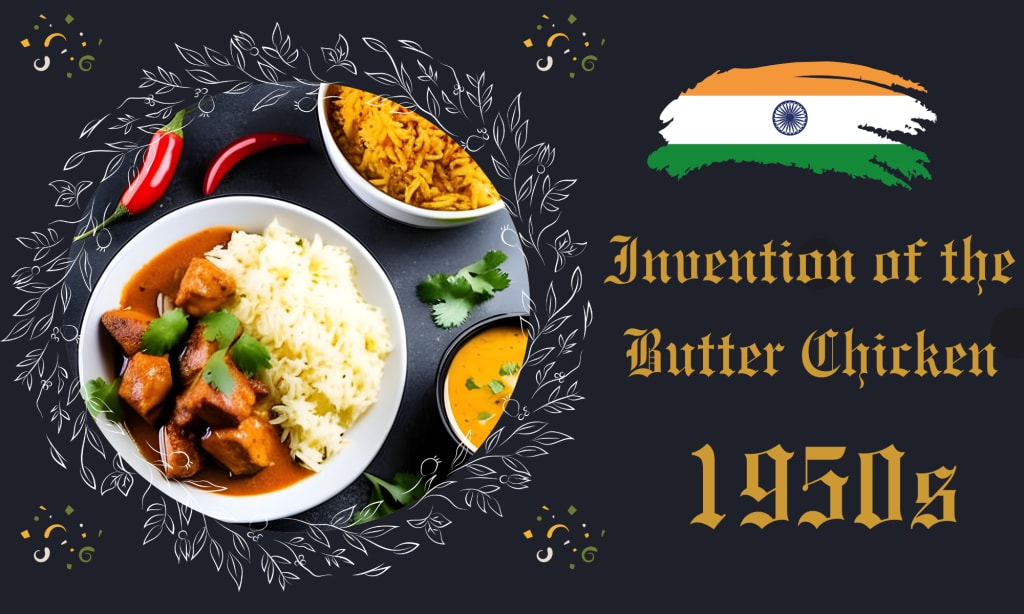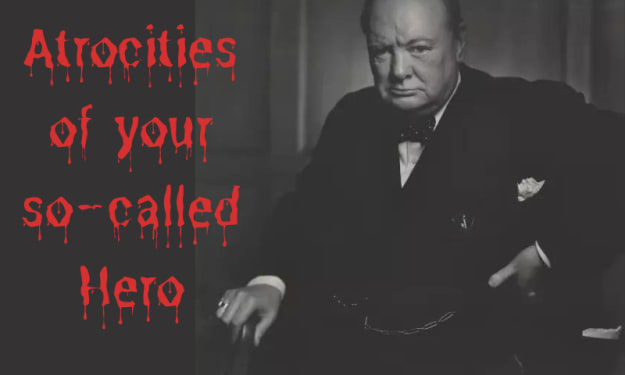Butter Chicken: The Flavorsome Tale of Culinary Ingenuity
Unveiling the Savory Origins and Global Impact of India's Beloved Butter Chicken Dish

Butter Chicken, also known as Murgh Makhani, is an iconic Indian dish that has garnered immense popularity worldwide. It is a tantalizing blend of succulent chicken pieces cooked in a rich and creamy tomato-based sauce, infused with aromatic spices. The dish boasts a perfect balance of flavors that have made it a favorite among food enthusiasts, both in India and beyond. In this article, we delve into the captivating history and invention of Butter Chicken, tracing its origins and the remarkable journey that led to its widespread acclaim.
Origins and Cultural Significance
Butter Chicken finds its roots in the vibrant city of Delhi, India. It was in the 1950s when a culinary legend named Kundan Lal Gujral, the founder of the iconic restaurant Moti Mahal, revolutionized the Indian culinary landscape with his innovative approach to cooking. Gujral's journey and his quest to create a dish that would delight the palates of his customers led to the birth of Butter Chicken.
Invention and Development

During that time, Gujral noticed that the traditional tandoori chicken served at his restaurant would often become dry and lose its tenderness when left over from the day before. Determined to make use of these leftover tandoori chicken pieces and avoid any wastage, he experimented with various ingredients to develop a new dish.
Gujral's breakthrough came when he decided to simmer the leftover tandoori chicken in a rich tomato-based gravy, which he enhanced with generous amounts of butter and cream. This ingenious combination not only revived the leftover chicken but also created a delightful harmony of flavors that proved to be an instant hit among his customers.
The Birth of a Legend
Moti Mahal's Butter Chicken soon gained immense popularity and became a staple in the restaurant's menu. Word of this delectable creation began to spread, attracting visitors from all walks of life, including politicians, celebrities, and foreign dignitaries. Its reputation grew further when it caught the attention of Jawaharlal Nehru, the first Prime Minister of India, who became a regular patron of the restaurant.
Moti Mahal's Butter Chicken also earned acclaim on the global stage. In the 1970s, the esteemed chefs of the restaurant were invited to cater for a banquet hosted by the Shah of Iran, where they showcased their culinary expertise and presented Butter Chicken to an international audience.
Butter Chicken Goes Global
The popularity of Butter Chicken soared with the increasing number of foreign visitors to India. It was during this time that the dish began to transcend cultural boundaries and find its way into Indian restaurants abroad. Chefs and food enthusiasts around the world were captivated by the rich and creamy sauce, the delicate flavors of the spices, and the tender chicken pieces that defined Butter Chicken.
Today, Butter Chicken is a globally recognized dish that features on menus in Indian restaurants in almost every corner of the world. Its unique blend of flavors has won the hearts of millions, and it has become synonymous with Indian cuisine.
The Recipe and Variations

The classic Butter Chicken recipe involves marinating the chicken overnight in a yogurt and spice mixture, which is then cooked in a tandoor (traditional clay oven) to achieve a smoky flavor and charred texture. The chicken is then simmered in a luscious sauce made with tomatoes, butter, cream, and an array of spices such as garam masala, cumin, and fenugreek.
While the original recipe remains beloved, variations of Butter Chicken have emerged over time to cater to diverse tastes. Some chefs add cashew paste or ground almonds to the sauce for added richness, while others experiment with ingredients like coconut milk or tamarind to create unique regional variations
A Global Culinary Phenomenon
The popularity of Butter Chicken soared with the increasing number of foreign visitors to India. As travelers savored this delectable dish in restaurants across the country, they were captivated by its rich flavors and the artful balance of spices. Impressed by its allure, many of these visitors sought to introduce Butter Chicken to their home countries.
As the dish made its way to international shores, innovative chefs and home cooks embraced Butter Chicken, adapting it to suit local tastes and ingredients. In some parts of the world, subtle modifications were made to make the dish less spicy or to incorporate locally available spices and seasonings. This resulted in delightful variations that gave Butter Chicken a global flair, while still paying homage to its Indian origins.
In the United Kingdom, for example, a milder version called "British Butter Chicken" gained popularity. It incorporated a touch of sweetness and creaminess, appealing to the British palate. In North America, variations such as "Butter Chicken Pizza" and "Butter Chicken Tacos" emerged, showcasing the versatility of this iconic dish in fusion cuisine.
Regional Adaptations
Within India itself, Butter Chicken has been embraced by different regions, each infusing it with its own culinary traditions. In Punjab, the birthplace of Butter Chicken, the dish is often enjoyed with tandoori roti or naan bread, along with a side of pickles and raita (yogurt-based condiment). In Delhi, where it originated, Butter Chicken is a staple at weddings and special occasions, captivating locals and visitors alike.
In South India, chefs put a unique spin on Butter Chicken by incorporating coconut milk into the sauce, creating a creamy and subtly spiced dish known as "Chicken Makhani." This variation highlights the diverse culinary landscape of India, showcasing the adaptability of Butter Chicken across the country.
The Legacy Continues
Today, Butter Chicken stands as a testament to the enduring legacy of Kundan Lal Gujral and the culinary innovation of Moti Mahal. The restaurant, which still operates in Delhi, carries the rich heritage of Butter Chicken, attracting both locals and tourists who seek to experience this legendary dish in its birthplace.
Moreover, Butter Chicken has found its way into home kitchens around the world. As families gather to recreate this beloved recipe, they not only pay homage to its origins but also create new memories and connections through the shared joy of food.
Butter Chicken has become more than just a dish—it is an emblem of cultural fusion, bringing together people from different backgrounds and tastes. It serves as a bridge between traditions, reminding us of the power of culinary creativity and the capacity of food to unite.
Conclusion
Butter Chicken, born out of Kundan Lal Gujral's culinary ingenuity, has grown from a solution to reduce food waste into a globally adored dish. Its journey from the kitchens of Moti Mahal to international recognition exemplifies the magic that can be achieved when passion, experimentation, and a deep appreciation for flavors intersect.
Whether enjoyed in the bustling streets of Delhi, the trendy neighborhoods of New York City, or the cozy comfort of your own home, Butter Chicken continues to captivate and delight. With its harmonious blend of spices, velvety texture, and timeless appeal, this iconic dish remains an ambassador of Indian cuisine, leaving an indelible mark on the world of gastronomy.
About the Creator
Enjoyed the story? Support the Creator.
Subscribe for free to receive all their stories in your feed. You could also pledge your support or give them a one-off tip, letting them know you appreciate their work.





Comments
There are no comments for this story
Be the first to respond and start the conversation.